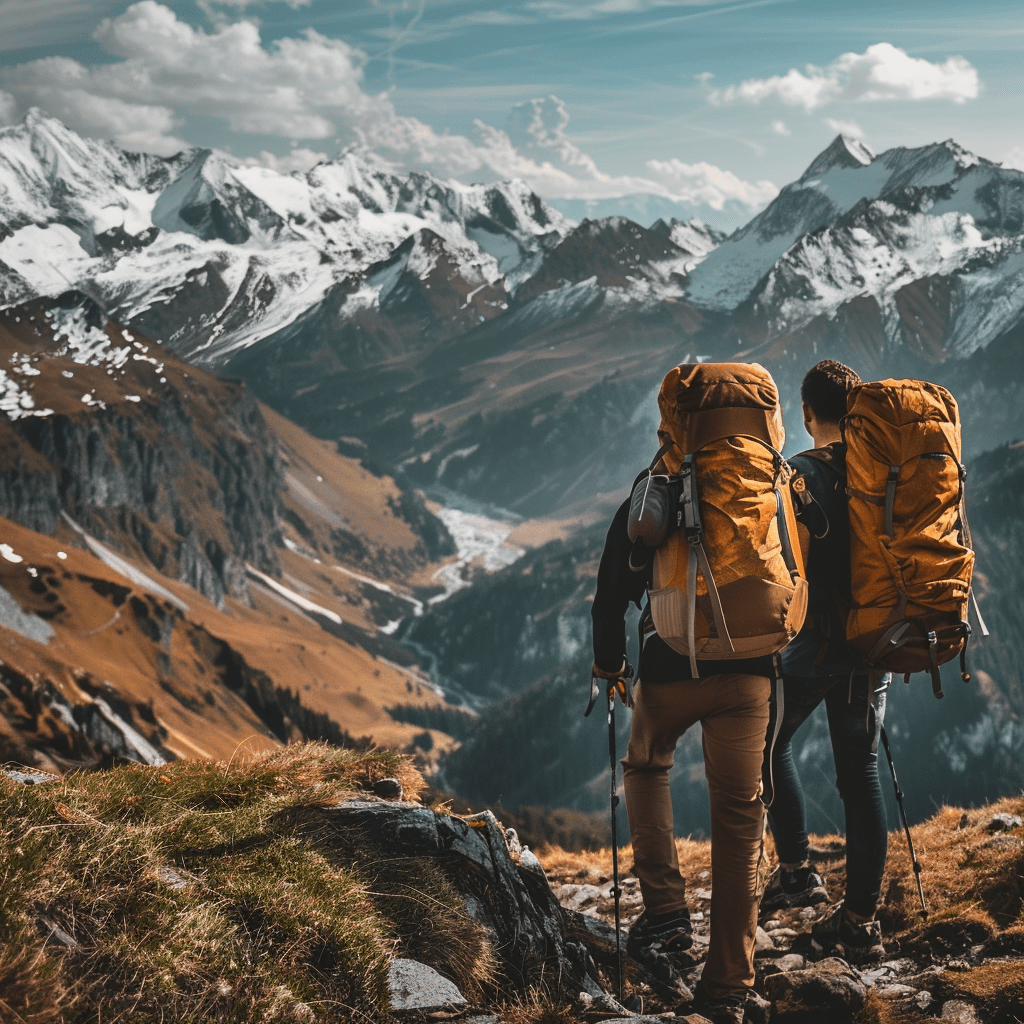Hello, fellow adventurers! Hiking travel hacks is a fantastic way to connect with nature, exercise, and experience the great outdoors.
Hiking travel hacks is a good hike requires preparation. Whether you’re a seasoned hiker or just starting, Some useful hints and tips can help your hiking experience much smoother and more enjoyable. Here, we share the top 10 travel hacks every hiker should know. Let’s dive in!
1. Pack Light and Smart
One of the first rules of hiking is to pack light. Trust me, you want to avoid lugging around a heavy backpack while trying to enjoy the scenery.
* Essential Items to Pack
Always start with the basics. Pack a map, compass, first aid kit, knife, lighter or matches, flashlight, food, and water. These essentials can make a big difference if things go differently than planned. Multi-purpose items are your friends here. For example, a bandana can be used as a head cover, a towel, or even a sling in an emergency.
* Multi-purpose Gear
Find things that can do more than one thing. One-tool or Swiss Army knives can be used instead of many things that are only used once. Dry-fast clothes that you can wear over and over are also invaluable. And remember, a lightweight, packable rain jacket to keep you dry without weighing you down.
2. Wear the Right Footwear
Your feet are your best friends on a hike. Treat them well, and they’ll carry you far.
* Choosing the Right Footwear
Terrain matters when it comes to hiking boots or shoes. For rocky, uneven paths, go for sturdy, high-ankle boots. Low-cut hiking shoes might be enough if you’re on a smoother trail. Always pick waterproof options if you’re expecting wet conditions.
* Breaking in New Shoes
Never, ever go on a hike with brand-new boots. Break them in by wearing them around the house, on short walks, or while running errands. This helps soften the material and mold the shoes to your feet, which reduces the risk of painful blisters.
3. Layer Your Clothing
Today, the weather can change in an instant mountainous areas. Layering your clothing helps you adapt quickly to these changes.
* The Layering System
- Base Layer: This layer keeps sweat off your skin. Find things made of merino wool or synthetic fibers.
- Mid Layer: This is your insulation. Fleece is an excellent choice as it traps heat to keep you warm.
- Outer Layer: This layer keeps the wind, rain, and snow off of you. A good-quality, breathable rain jacket is essential.
* Benefits of Layering
Hiking travel hacks Layering allows you to adjust your clothing according to the weather. You can change the number of layers, ensuring you stay comfortable. Each layer also serves multiple functions, like a mid-layer fleece that can be a pillow at night.
4. Stay Hydrated Efficiently
Staying hydrated is vital to a good hike, but carrying enough water can be heavy. Here’s how to manage it.
* Hydration Packs and Water Bottles
Hydration packs, like those from CamelBak, are very convenient and let you drink hands-free. If you prefer bottles, consider collapsible ones that save space when empty.
* Water Filters and Purification Tablets
A lightweight water filter or purification tablets are game-changers if your hike takes you near water sources. These devices allow you to refill your bottles from streams or lakes, reducing the amount of water you need to carry.
5. Use Trekking Poles
Trekking poles are for more than just serious mountaineers. They can be incredibly beneficial for any hiker.
* Benefits of Trekking Poles
Trekking poles help distribute your weight, which reduces strain on your legs and knees. They also provide stability on uneven terrain and can be helpful when crossing streams or navigating slippery paths.
* How to Use and Adjust Trekking Poles
Adjust the poles so your arms are at a 90-degree angle when holding them. Use the wrist straps to help distribute weight. Shorten the poles slightly when going uphill; lengthen them when going downhill for extra support.
6. Plan Your Route and Download Maps
Knowing your route can prevent getting lost and ensure a smoother hike.
* Importance of Route Planning
Before heading out, research your trail. Know the distance, elevation changes, and any potential hazards. Check for recent trail reports and weather conditions.
* Tools and Apps for Offline Maps
Download maps and navigation apps like All Trails or Gaia GPS. You can download maps to use when you don’t have cell service, which is very useful in places without cell service. Always bring a real map and guide with you. a backup.
7. Keep Your Gear Organized
An organized pack means quickly finding what you need without digging through everything.
* Organizing Your Backpack
Use stuff sacks and compression bags to organize your gear. Color-code them for easy identification. Keep frequently used items like snacks, maps, and a flashlight in easily accessible pockets.
* Benefits of an Organized Pack
An organized pack balances the weight better, making it easier to carry. It also means less time rummaging for items, so you can focus more on enjoying the hike.
8. Food and Nutrition Tips
Getting enough nutrients keeps your energy up and helps you recover from strenuous activity.
* High-energy Snacks and Meals
Pack lightweight, high-energy snacks like nuts, dried fruit, jerky, and energy bars. For meals, consider dehydrated options that need hot water.
* Meal Planning for Multi-day Hikes
Hiking travel hacks Plan your meals to ensure you have enough calories. Pre-packaged meals are convenient, but homemade options like pasta, rice, and oatmeal can be more economical. Remember a small stove or a way to boil water.
9. First Aid and Safety
Accidents can happen, so being prepared with first aid knowledge and supplies is essential.
* Essential First Aid Items
Carry bandages, antiseptic wipes, adhesive tape, pain relievers, and tweezers. Know how to treat common injuries like blisters, sprains, and cuts.
* Basic First Aid Knowledge
If you can, take a basic first aid course. Knowing what to do if you get hurt or sick in the wild can make a huge difference.
10. Leave No Trace Principles
Respecting the environment ensures that trails and campsites remain beautiful and accessible for future hikers.
* Explanation of Leave No Trace Principles
- Plan and Prepare: Know the regulations and particular concerns for the area you’ll visit.
- Travel and camp on surfaces that will last: Stay on trails and beaches.
- How to Get Rid of Waste: Take out all the trash and food that you don’t want anymore. Keep the past alive and leave nature things the way you found them.
- Lessen the damage from a campfire by cooking on a stove and enjoying a light lantern instead of a fire.
- Be kind to animals. Stay away from animals and never give them food.
- Take Care of Other people: Be kind to other people and make sure they have a good time.
* Practical Tips for Adhering to Leave No Trace
Pack a small trash bag to collect your waste. Use biodegradable soap and carry out any trash, even if it’s not yours. Stick to established campsites and trails to minimize your impact.
Conclusion
Hiking travel hacks is a rewarding and enriching experience, but being prepared is vital to genuinely enjoying it. Following these top 10 travel hacks will enable you to tackle the trails confidently. From packing light and wearing the proper footwear to respecting nature and staying safe, these tips will help you make the most of your hiking adventures. So, put your boots on and get your stuff hit the trails. Happy hiking!













